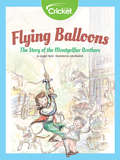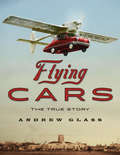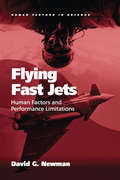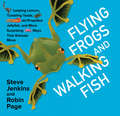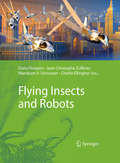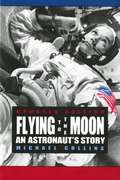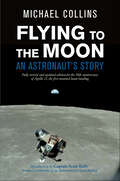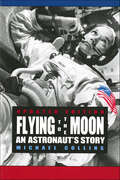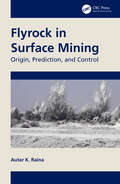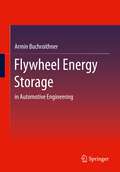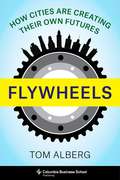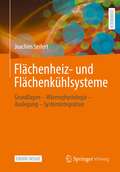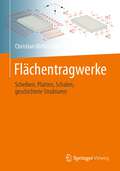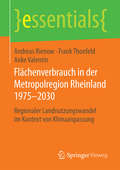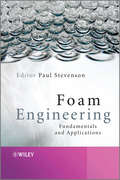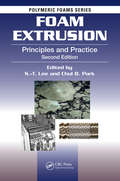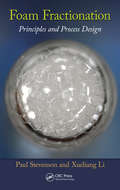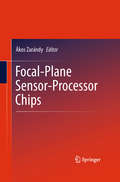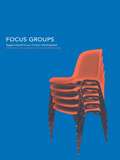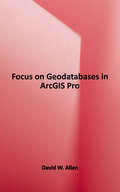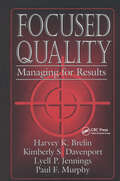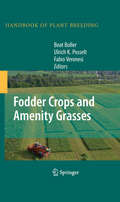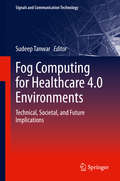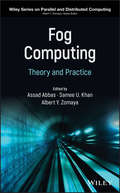- Table View
- List View
Flying Balloons: The Story of the Montgolfier Brothers
by Joseph TaylorDid you know hot air balloons were dreamed up by a French boy in the 1700s? Joseph Montgolfier devoted his life to experiments that he hoped would allow him to fly. With the help of his little brother, his invention allowed humans to fly for the first time in history!
Flying Cars: The True Story
by Andrew GlassStories of inventors who have aimed for the sky: &“Start your engines and get ready to take off for an amazing read&” (Kirkus Reviews, starred review). Humans have always wanted to fly—and as soon as there were planes and cars, many people saw a combination of the two as the next step for personal transportation. Visionary engineers and inventors did their best to make the flying car a reality, not just an elusive dream. This book is a breezy account of hybrid vehicles and their creators, and of the intense drive that kept bringing inventors back to the drawing board despite repeated failures and the dictates of common sense. Illustrated with archival photos, this entertaining survey tells the stories of dreamers from Robert Fulton to Henry Ford to Buckminster Fuller, taking readers as far back as Icarus and forward into the present day—with a look toward the possibilities of the future as well. &“Readers learn about many intriguing airplane-car hybrids, such as the Airphibian, invented by Robert Fulton, who flew his vehicle at 110 miles per hour, landed it, single-handedly converted it into a car in under five minutes, then &‘drove the convertible proudly into Manhattan at a breezy 55 miles per hour.&’ These stories of invention are undeniably appealing. . . . Fascinating.&” —School Library Journal Includes illustrations, source notes, bibliography, and an index
Flying Fast Jets: Human Factors and Performance Limitations (Human Factors in Defence)
by David G. NewmanThis book provides a detailed general overview of the human factors and performance limitations associated with flying fast jets, integrating all the latest available research literature on the demanding operational tasks faced by such pilots and aircrews. As such, it has a strong military focus, dealing with pilots of fighter aircraft, attack aircraft and lead-in fighter trainer aircraft that are traditionally only single or dual pilot operations. The book deals not only with the issue of G force, but discusses ejection and escape/survival, disorientation, high altitude physiology, pilot training and selection, helmet-mounted equipment, situational awareness, data fusion and multi-sensor integration, human machine interface issues and advanced cockpit design. It examines the human performance issues associated with the technological advances made in fast jets, such as increased manoeuvrability, increased use of the pilot’s head as a mounting platform for sensor and weapons systems, and the complexities involved in the human-machine interface within these aircraft.
Flying Fortress: The Illustrated Biography of the B-17s and the Men Who Flew Them
by Edward JablonskiRenowned throughout the world for its strength and destructiveness, the Flying Fortress was one of the greatest fighting airplanes of all time. In this comprehensively documented biography, Edward Jablonski tells the story of the Flying Fortress Boeing B-17, America’s legendary long-range bomber. From the B-17's near death in infancy to the emergence of its successor, the Superfortress, Flying Fortress captures the exhilarating career of the B-17 with thrilling accounts of the exploits of these planes and their pilots. In this unforgettable history, Jablonski details the Fortress’s role in the strategic and tactical issues of air war, and chronicles the B-17’s roles in famous raids including Regensburg, Marienburg, Munster, Schweinfurt, Dresden, and Berlin, along with its part in great battles, such as D-Day. Masterfully written, Flying Fortress is a classic in aviation literature with over 400 illustrations (many unpublished action photos) in addition to a section on the design of the Flying Fortress, which includes a number of detailed cutaway drawings. Approximately 60 pages from the Flying Fortress’s Piloting Manual are also featured herein. Find out why the Flying Fortress ultimately redefined the concept of war.
Flying Frogs and Walking Fish: Leaping Lemurs, Tumbling Toads, Jet-Propelled Jellyfish, and More Surprising Ways That Animals Move
by Steve Jenkins Robin PageA red-lipped batfish waddles across the sea floor on its fins, searching for small sea creatures to eat. Other animals may fly or glide, or jet-propel themselves to get around. These creatures come equipped with legs, wings, or tentacles, and they often move from place to place in surprising ways. In the latest eye-catching escape into the kingdom of Animalia, Caldecott Honor-winning team Jenkins and Page show how animals roll, fly, walk, leap, climb, swim and even flip! This fascinating and fun illustrated nonfiction melds science, art, biology, and the environment together in a detailed and well-researched book about how animals move in our world today.
Flying Insects and Robots
by Dario Floreano Jean-Christophe Zufferey Mandyam V. Srinivasan Charlie EllingtonFlying insects are intelligent micromachines capable of exquisite maneuvers in unpredictable environments. Understanding these systems advances our knowledge of flight control, sensor suites, and unsteady aerodynamics, which is of crucial interest to engineers developing intelligent flying robots or micro air vehicles (MAVs). The insights we gain when synthesizing bioinspired systems can in turn benefit the fields of neurophysiology, ethology and zoology by providing real-life tests of the proposed models. This book was written by biologists and engineers leading the research in this crossdisciplinary field. It examines all aspects of the mechanics, technology and intelligence of insects and insectoids. After introductory-level overviews of flight control in insects, dedicated chapters focus on the development of autonomous flying systems using biological principles to sense their surroundings and autonomously navigate. A significant part of the book is dedicated to the mechanics and control of flapping wings both in insects and artificial systems. Finally hybrid locomotion, energy harvesting and manufacturing of small flying robots are covered. A particular feature of the book is the depth on realization topics such as control engineering, electronics, mechanics, optics, robotics and manufacturing. This book will be of interest to academic and industrial researchers engaged with theory and engineering in the domains of aerial robotics, artificial intelligence, and entomology.
Flying to the Moon: An Astronaut's Story
by Michael CollinsIn this entrancing account, space traveler Michael Collins recalls his early days as an Air Force test pilot, his astronaut training at NASA, and his unparalleled experiences in orbit, including the Apollo 11 mission, the first manned lunar landing. The final chapter to his autobiography, revised and updated for this edition, is an exciting and convincing argument in favor of mankind's continued exploration of our universe.
Flying to the Moon: An Astronaut's Story
by Michael CollinsBased on the adult bestseller Carrying the FireIn time for the 50th anniversary of man's first landing on the moon, this re-release of Michael Collins's autobiography is a bold, sparkling testament to exploration and perseverance. In this captivating account, space traveler Collins recalls his early days as an Air Force test pilot, his training at NASA, and his unparalleled experiences in orbit, including the Apollo 11 mission, the first manned lunar landing. The final chapter to this autobiography is an exciting and convincing argument in favor of mankind's continued exploration of our universe. Originally published in 1976 and updated for this new edition, including an introduction from astronaut Scott Kelly, Collins's voice and message are sure to resonate with a new generation of readers.
Flying to the Moon: An Astronaut's Story
by Michael CollinsIn this entrancing account, space traveler Michael Collins recalls his early days as an Air Force test pilot, his astronaut training at NASA, and his unparalleled experiences in orbit, including the Apollo 11 mission, the first manned lunar landing. The final chapter to his autobiography, revised and updated for this edition of Flying to the Moon, is an exciting and convincing argument in favor of mankind's continued exploration of our universe. "Several astronauts have written about their experiences, but none so well as Michael Collins...This is just the book to give the child whose parents made Yeager and The Right Stuff best sellers."-The Washington Post Book World
Flyrock in Surface Mining: Origin, Prediction, and Control
by Autar K. RainaThis book provides a comprehensive understanding of historical and recent research, with a critical review of several aspects of the flyrock phenomenon, along with classification of pertinent literature. This puts flyrock into proper perspective and develops a comprehensive regime for flyrock prediction and control. It also addresses the blast danger zone demarcation based on scientific understanding in comparison to the consequence-based approach supported by pertinent case studies. Features: Discusses exclusive material on flyrock in surface mining. Presents comprehensive and critical review of the flyrock phenomenon. Reviews prediction and control mechanisms in vogue with scientific and risk-based definitions of blast danger zone. Provides new insights into the flyrock definitions, prediction, and prevention along with the research approach to the problem. Includes Indian case studies and summarize global data available in the published domain. This book is aimed at researchers and graduate students in mining and civil engineering, engineering geology, and blasting.
Flywheel Energy Storage: in Automotive Engineering
by Armin BuchroithnerStoring energy is one of the most important challenges of our time. Energy storage systems are not only essential for switching to renewable energy sources, but also for all mobile applications. Electro-mechanical flywheel energy storage systems (FESS) can be used in hybrid vehicles as an alternative to chemical batteries or capacitors and have enormous development potential. In the first part of the book, the Supersystem Analysis, FESS is placed in a global context using a holistic approach. External influences such as the vehicle, driver and operating strategy, including socio-psychological aspects, are analyzed with regard to their interaction with the memory. From this, optimal application scenarios are derived and the development goals relevant for market success are defined. In the second part, the consideration of the subsystem, those critical components in the FESS are identified which are responsible for the achievement of the technical target properties. From the point of view of maximum cost reduction, specific solutions for the design of the key components are presented and their suitability is validated through empirical studies on the housing, bearing and rotor as well as through overall prototypes.This book is a translation of the original German 1st edition Schwungradspeicher in der Fahrzeugtechnik by Armin Buchroithner published by Springer Fachmedien Wiesbaden GmbH, part of Springer Nature in 2019.
Flywheels: How Cities Are Creating Their Own Futures
by Tom AlbergOnce a blue-collar outpost, Seattle, home to Microsoft, Amazon, and hundreds of startups, transformed into one of the world’s major innovation hubs in less than twenty years. As other cities try to solve the riddle of creating vibrant economies, many have looked to Seattle as a model for tech-driven urban renaissance. However, that success comes with skyrocketing housing costs, increasing homelessness, public safety concerns, persistent racial inequality, and a widening gap between the haves and have-nots. Against that backdrop, big tech has become a popular target.Tom Alberg, a venture capitalist who was one of the first investors in Amazon, draws on his experience in Seattle’s tech boom to offer a vision for how cities and businesses can build a brighter future together. He explores ways that cities can soar to prosperity by creating the conditions that encourage innovation. Like flywheels, livable cities generate momentum by drawing creative citizens who launch businesses. Success attracts more talent, energizing local economies and accelerating further innovation. Alberg emphasizes the importance of city governments and tech companies partnering to address civic challenges. He reflects on why the benefits of the tech boom have not been distributed equally and what business and government leaders must do differently to ensure inclusive growth. The book also examines success stories from smaller cities and their lessons for other up-and-coming tech hubs. Demonstrating the need for innovative thinking that encourages livability alongside economic growth, Flywheels is timely reading for everyone from mayors to business leaders to engaged citizens.
Flächenheiz- und Flächenkühlsysteme: Grundlagen – Wärmephysiologie – Auslegung – Systemintegration
by Joachim SeifertDieses Buch beschreibt die grundlegenden Konstruktionen von Flächenheiz- und Flächenkühlsystemen aus theoretischer Sicht. Die Wirkung der Systeme wird in Hinblick auf die thermische Behaglichkeit beschrieben. Zusätzlich erfolgt eine detaillierte Betrachtung der Systemintegration.
Flächentragwerke: Scheiben, Platten, Schalen, geschichtete Strukturen
by Christian MittelstedtDieses Buch bietet eine umfassende Darstellung der Statik der Flächentragwerke und ist in fünf Abschnitte unterteilt. Nachdem im ersten Abschnitt die Grundlagen der Elastizitätstheorie und der Energiemethoden der Elastostatik kurz eingeführt wurden, widmet sich der zweite Abschnitt der Statik der Scheibentragwerke. Neben isotropen Scheiben in kartesischen und polaren Koordinaten werden außerdem Näherungsverfahren sowie anisotrope Scheiben behandelt. Der nachfolgende dritte Abschnitt behandelt Plattenstrukturen, wobei auch hier Platten in kartesischen und polaren Koordinaten behandelt werden und zudem Näherungsverfahren sowie Plattentheorien höherer Ordnung besprochen werden. Weitere Kapitel dieses Abschnitts behandeln das Plattenbeulen sowie die geometrisch nichtlineare Analyse. Der vierte Abschnitt dieses Buchs ist der Statik geschichteter Flächentragwerke gewidmet. Hierbei werden sowohl die Klassische Laminattheorie als auch Laminattheorien höherer Ordnung diskutiert, und als ein Spezialfall wird die sog. Sandwichbauweise angesprochen. Der fünfte und letzte Abschnitt dieses Buchs ist den Schalen, also gekrümmten Flächentragwerken gewidmet, wobei hier der gängigen Einteilung in die Membrantheorie einerseits und der Biegetheorie andererseits gefolgt wird.Dieses Buch richtet sich an Studierende an Fachhochschulen und Universitäten, aber auch an Ingenieurinnen und Ingenieure in der Praxis sowie an Forscherinnen und Forscher der Ingenieurwissenschaften.
Flächenverbrauch in der Metropolregion Rheinland 1975–2030: Regionaler Landnutzungswandel im Kontext von Klimaanpassung (essentials)
by Andreas Rienow Frank Thonfeld Anke ValentinDie Autoren schaffen mit der Entwicklung kleinräumiger Lösungen zum Umgang mit dem Landnutzungs- und Klimawandel Verständnis und Bewusstsein beim Leser und bieten auf diese Weise eine gute Basis für politisches Handeln. Sie zeigen, dass zunächst die Bauleitplanung in der Pflicht ist, wie es in vielen lokalen Klimaanpassungskonzepten nachzuvollziehen ist. Aber auch die Zivilbevölkerung kann ihren Beitrag zu einer klimaangepassten Gestaltung unserer Umwelt leisten. Politik und Verwaltung können Vorgaben für neu geplante Gebäude geben, die sich an den Erkenntnissen orientieren, die über Fernerkundungsdaten und Klimamodelle erzielt werden. Gerade die nach außen orientierte Siedlungsentwicklung der letzten Jahrzehnte wird über den Blick auf die klassifizierten Satellitenbilder erschreckend gut sichtbar.
Foam Engineering
by Paul StevensonContaining contributions from leading academic and industrial researchers, this book provides a much needed update of foam science research. The first section of the book presents an accessible summary of the theory and fundamentals of foams. This includes chapters on morphology, drainage, Ostwald ripening, coalescence, rheology, and pneumatic foams.The second section demonstrates how this theory is used in a wide range of industrial applications, including foam fractionation, froth flotation and foam mitigation. It includes chapters on suprafroths, flotation of oil sands, foams in enhancing petroleum recovery, Gas-liquid Mass Transfer in foam, foams in glass manufacturing, fire-fighting foam technology and consumer product foams.Key features:Foam fractionation is an exciting and emerging technology, starting to gain significant attentionDiscusses a vital topic for many industries, especially mineral processing, petroleum engineering, bioengineering, consumer products and food sectorLinks foam science theory to industrial applications, making it accessible to an engineering science audienceSummarizes the latest developments in this rapidly progressing area of researchContains contributions from leading international researchers from academia and industry
Foam Extrusion: Principles and Practice, Second Edition (Polymeric Foams)
by Chul B. Park S. T. LeeCombining scientific principles with engineering practice, this book discusses the theory, design, processing, and application of degradable foam extraction; presents the collective expertise of leading academic, research, and industry specialists; and captures the interesting evolution of the field. Containing updated chapters on extrusion equipment, blowing agents, PET foam, and microcellular innovation, the second edition includes new chapters on the latest developments in processing, rheology, and biodegradable and sustainable foams, as well as new coverage of cutting-edge foaming mechanisms and new case studies, examples, and figures.
Foam Fractionation: Principles and Process Design
by Xueliang Li Paul StevensonFoam fractionation is a separation process in which proteins and other amphipathic species adsorb to the surface of bubbles. The bubbles are then removed from the solution in the form of foam at the top of a column. Due to its cost-effectiveness, foam fractionation has the potential for rapid commercial growth, especially in biotechnology.To assist
Focal-Plane Sensor-Processor Chips
by Ákos ZarándyFocal-plane sensor-processor imager devices are sensor arrays and processor arrays embedded in each other on the same silicon chip. This close coupling enables ultra-fast processing even on tiny, low power devices, because the slow and energetically expensive transfer of the large amount of sensory data is eliminated. This technology also makes it possible to produce locally adaptive sensor arrays, which can (similarly to the human retina) adapt to the large dynamics of the illumination in a single scene This book focuses on the implementation and application of state-of-the-art vision chips. It provides an overview of focal plane chip technology, smart imagers and cellular wave computers, along with numerous examples of current vision chips, 3D sensor-processor arrays and their applications. Coverage includes not only the technology behind the devices, but also their near- and mid-term research trends.
Focus Groups: Supporting Effective Product Development
by Deana McDonagh Joe LangfordThe focus group is widely used to as a tool for increasing the understanding of users and their requirements, and identifying potential solutions for these requirements. Its main value lies in the conveyance of less tangible information that cannot be obtained using more traditional methods. Eliciting user needs beyond the functional is crucial for
Focus on Geodatabases in ArcGIS Pro (Focus On)
by David W. AllenThis book introduces readers to the geodatabase, the comprehensive information model for representing and managing geographic information across the ArcGIS platform. Sharing best practices for creating and maintaining data integrity, chapter topics include the careful design of a geodatabase schema, building geodatabases that include data integrity rules, populating geodatabases with existing data, working with topologies, editing data using various techniques, building 3D views, and sharing data on the web. Each chapter includes important concepts with hands-on, step-by-step tutorials, sample projects, and datasets, 'Your turn' segments with less instruction, study questions for classroom use, and an independent project. Instructor resources are available by request.
Focused Quality: Managing for Results
by Paul MurphyFocused Quality: Managing for Results is a book about using quality improvement as a means to enhance bottom line results. Written for managers in industry, services, healthcare and government, this important new book provides a focused approach on how to target critical improvement initiatives and insure their success.Prepare - Plan - Deploy - Transition are the steps in the improvement process that are covered in detail. Included are examples of how organizations have successfully accomplished each step. Practical lessons on how to and how not to implement quality and process improvement initiatives are given.Process assessment is crucial to identifying the importance of a process and defining the scope of what is involved in order to improve it. Before deciding to refine, redesign or reengineer an assessment is needed. Focused Quality: Managing for Results not only shows you how to do an assessment but also how to apply the results to improve the bottom line.Application is emphasized throughout the book with the focus on the managers role in leading the change effort. The authors have provided a set of questions that management should answer to determine if their organization is ready to effectively implement the improvement process. Realizing that even the best plans can go astray there is also a diagnostic check sheet to pinpoint the causes of and solutions for process improvement failures.
Fodder Crops and Amenity Grasses
by Fabio Veronesi Ulrich K. Posselt Beat BollerThe main role of grasses, clovers and alfalfa in temperate agriculture is still to provide forage for ruminant animals but, in the last decades, the importance of amenity grasses increased markedly and, in the near future, new developments in the areas of energy and biomass use can be envisaged. Fodder Crops and Amenity Grasses, fifth volume in the series, Handbook of Plant Breeding, covers all these aspects. Most fodder crops and amenity grasses are perennials and many of them are natural or induced polyploids. Thus, breeding procedures and strategies differ greatly from breeding annual field crops. Breeding objectives are more difficult to define in forage crops because direct measurement of the efficiency of animal production during breeding and variety assessment is impractical. As a result, a large number of selection criteria have been developed for the particular crops. However, breeding objectives and methodology have a common basis among these species and are therefore presented in the general chapters. Particular emphasis is placed on the breeding methodology for cross-pollinating species because the large majority of crops belong to this group. In addition, the potential of new molecular techniques to complement breeding concepts and strategies is presented and critically discussed. Special techniques and procedures as well as particular breeding goals will be included in the crop specific chapters. Amenity grass breeding has its own breeding objectives and testing procedures, however, the species are mostly the same as in forage grass breeding, and crop specific chapters will include the amenity aspects where appropriate. The crop specific chapters will cover the range of topics given in the guidelines below. The volume on Fodder Crops and Amenity Grasses is the fifth volume in series Handbook of Plant Breeding after the initial volumes on Vegetables, Cereals, Oil Crops and Fruits. Like the other volumes in the series, the volume presents information on the latest scientific information in applied plant breeding using the current advances in the field, from efficient use of genetic resources to impact of biotechnology in plant breeding. Outstanding scientists from all over the world have contributed chapters to the work.
Fog Computing for Healthcare 4.0 Environments: Technical, Societal, and Future Implications (Signals and Communication Technology)
by Sudeep TanwarThis book provides an analysis of the role of fog computing, cloud computing, and Internet of Things in providing uninterrupted context-aware services as they relate to Healthcare 4.0. The book considers a three-layer patient-driven healthcare architecture for real-time data collection, processing, and transmission. It gives insight to the readers for the applicability of fog devices and gateways in Healthcare 4.0 environments for current and future applications. It also considers aspects required to manage the complexity of fog computing for Healthcare 4.0 and also develops a comprehensive taxonomy.
Fog Computing: Theory and Practice (Wiley Series on Parallel and Distributed Computing)
by Albert Y. Zomaya Samee U. Khan Assad AbbasSummarizes the current state and upcoming trends within the area of fog computing Written by some of the leading experts in the field, Fog Computing: Theory and Practice focuses on the technological aspects of employing fog computing in various application domains, such as smart healthcare, industrial process control and improvement, smart cities, and virtual learning environments. In addition, the Machine-to-Machine (M2M) communication methods for fog computing environments are covered in depth. Presented in two parts—Fog Computing Systems and Architectures, and Fog Computing Techniques and Application—this book covers such important topics as energy efficiency and Quality of Service (QoS) issues, reliability and fault tolerance, load balancing, and scheduling in fog computing systems. It also devotes special attention to emerging trends and the industry needs associated with utilizing the mobile edge computing, Internet of Things (IoT), resource and pricing estimation, and virtualization in the fog environments. Includes chapters on deep learning, mobile edge computing, smart grid, and intelligent transportation systems beyond the theoretical and foundational concepts Explores real-time traffic surveillance from video streams and interoperability of fog computing architectures Presents the latest research on data quality in the IoT, privacy, security, and trust issues in fog computing Fog Computing: Theory and Practice provides a platform for researchers, practitioners, and graduate students from computer science, computer engineering, and various other disciplines to gain a deep understanding of fog computing.
